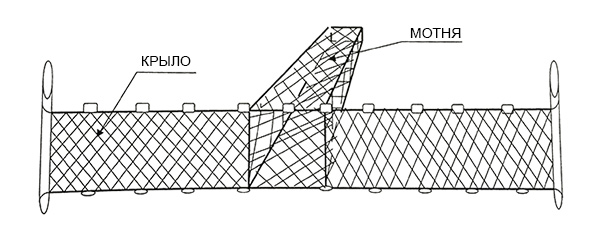Have any questions?
Leave a message and we will answer you:
Drag Nets
A drag net is a net operated from the shore.
The gear is composed of a bunt (bag or lose netting) and long wings often lengthened with long ropes for towing the drag net to the beach.
The headrope with floats is on the surface, the footrope is in permanent contact with the bottom and the net is therefore a barrier which prevent the fish from escaping from the area enclosed by the net. The fish are retained in the bag. It is not necessary for the bag to be exactly in the centre and in this case the wings are not of equal length.
No specific gear handling equipment is required for fishing operations but 2 people for towing the net to the shore.

A net of up to 40-metres length is allowed, with the mesh width and depth setting for your area.
Once you have walked out, the second person walks the net out to the side – again, staying as deep as possible. It is important to check that the float and the lead lines do not twist over. Ropes of up to 8 meters in length are tied onto the lead line and float line (warps) and then tied onto a strong but lightweight pole. Next, simply walk straight in towards the shore. As you move in, the net will curve; it’s important to walk the net into the shallows – most fish will be funneled into the net’s belly. Be sure to cover new ground with each drag.
Check that the area you’re drag-netting does not have any large snags or sharp rocks. If possible, visit the location on a very low tide and mark any rocks on a hand-held GPS. If the net does snag up during the drag, having a third person to free the net becomes useful. Drag-netting on the last of the outgoing and the start of the incoming tide is considered to be the most successful. You can drag-net on a mid to high tide too, as long as there is enough clean ground to haul the net ashore onto. Low tide is best, though, and becomes even more productive when coinciding with low light or the hours of darkness, especially in harbor and estuary environments. If drag-netting during the day, areas with discolored water are favored. When drag-netting sandy surf beaches, the time and tide are not as important, but choosing a day without too much swell or wave action enables longer and more successful drags. Drifting weed can be a problem, so go drag-netting after a few days of offshore winds.
Drag-netting can be done all year round, but overall the warmer summer months are more productive as many types of fish come into shallow water. A wide range of fish species can be caught in a drag-net, although overall flounders are the main target.
Drag-nets of around 30 metres are best for most situations, with the modest size making them more manageable, especially if there are only two people.
However, a 40-metre net can be used with four people; you can use a dinghy to tow the net out from the shore into deeper water, but regulations do not allow the net to be mechanically hauled in.
Often the flounders will not be tangled in the drag-net, instead just sitting on the net mesh, so it’s important to smoothly and steadily haul the net ashore. Afterwards, check for any holes. Having a repair kit on hand to stitch any damage done on the spot is a good idea.
Drag-netting generally involves wading – and you never know when you might step into a deep hole or channel – especially on surf beaches or near river mouths. Having a buoyancy vest is simply common sense. Also, keep a diver’s knife accessible in case you get tangled in the net. Take extreme care anywhere there are strong currents – that’s another reason why slack low tide is a good time to target in the more tidal areas.
A good head torch (and back-up) is a must if working in the dark hours. Overall, drag-netting can be a fun and productive way to fish with a few mates – especially over the summer months and into autumn (which is often the best time of year for flounders). It requires a bit of gear and preparation, but is a great way to get exercise while taking in the sea air.
